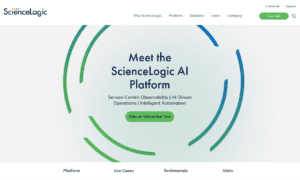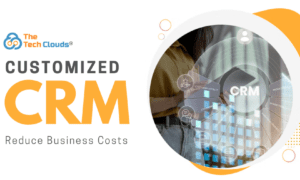Nowadays organizations must deal with massive volumes of data that are kept across numerous places and originate from various sources. Gaining a comprehensive understanding of the specifics might be challenging when data is scattered across multiple platforms. Making decisions can benefit greatly from having the capacity to comprehend collected data in its whole.
Understanding the specifics and how they relate to other data points can provide information that would otherwise be obscured or difficult to obtain without a comprehensive picture of the case. Thus, having a thorough awareness of all the information within your company enables leaders to accurately evaluate both their own operations and the competition landscape.
The segregated data from several locations can be merged, transformed into comprehensible form. Then fed into a centralized data storage unit to yield insightful business data by integrating data integration tools into the data ecosystem.
What does data integration mean?
The process of combining data in various formats or structures from several data sources into a single, centralised location—a database, data warehouse, or any other desired destination—is known as data integration. It seeks to offer an all-encompassing, 360-degree perspective of the organisational data. Data integration provides vital insights into operations and customer needs, allowing businesses to leverage raw data to support and enhance company value.
Streaming ETL addresses this need by processing data continuously as it is generated, providing up-to-the-minute analytics.
Data integration vs. data ingestion
After learning what data integration is, let’s investigate data ingestion to resolve the conflict between data ingestion and data integration!
The process of transferring data from one source or location to another in order to store it in a database, data warehouse, or data lake is known as data ingestion. The data is first extracted from its original format and then changed into a format that is appropriate for storage. Usually, the data is put onto the target system after being extracted from JSON, CSV, XML, and Excel files.
In contrast, when data is ingested, it is loaded into the intended location without first being processed. It is nothing more than the movement of data between systems. This indicates that no filtering or modification is done to the data before it is sent.
Data ingestion is the process of gathering and sending data to the destination storage for additional processing from a variety of input sources. However, data integration combines unprocessed data from several sources, modifies it, and feeds it into a data warehouse or other target location.
Data integration’s advantages
Although many software development and IT operations (DevOps) teams use data integration, you might not be aware of this. The way you envision your technology in the future is one illustration of this. A successful DevOps programme requires continuous thinking about how your team can develop, test, and deploy apps. Programmes and applications that are tailored to your audience are essential, from experimentation to tactical operational deployment, otherwise you run the risk of losing them to your rivals. You can stay accurate and up to date by incorporating data into your application techniques and learning valuable lessons along the way.
Categories of data integration tools
- On-premise:
When combining data in several formats from multiple on-premise or local sources, this kind of data integration tool is the best option for organisations. Together with native connectors that have been adjusted for batch loading from several data sources, they are housed on a local network or private cloud.
- Cloud-based:
Businesses can access and manage apps and data from many sources into a cloud-based data warehouse with the help of cloud-based data integration solutions, also known as integration platforms as a service (iPaaS). It enables the company to monitor and manage several apps from a single, centralised system by dismantling software silos. IT teams may bridge the digital gap with the use of cloud integration technologies. Cloud integration unifies disparate cloud-based apps on a single platform.
- Open-source:
These are the greatest solutions available to avoid utilising proprietary and maybe expensive corporate software development tools. It also gives you complete control over internal data.
- Proprietary:
These tools differ from open-source ones primarily in that they are more expensive. Their primary purpose is to effectively serve certain corporate use cases.
Important things to think about when choosing data integration tools
The demand for the best data integration tools is widespread across many different industries in the world, and it varies depending on the volume and complexity of data as well as the requirements of the organisation for integrating data from several sources.
For any corporate data integration use case, a protocol can be developed to automate tedious tasks and optimise workflows to ensure precision. The core functions of a data integration system are combining, cleaning, and moving data from one or more sources to a destination. These duties can be carried out in a number of methods.
Gathering and prioritising requirements, such as the data source and intended destination, is the initial stage in evaluating data integration options. Therefore, if the organisation first gains a solid understanding of data management, integration, and business requirements, it will be better prepared to navigate the wide range of data integration Tools available.
Once the criteria are determined, the following step is to create a list of particular features and functionalities for comparison and assessment. The organization’s final choice for a data integration solution should be based on its use cases, budget, resources, and capabilities; it shouldn’t just be the product with the most features or the highest ranking.
Conclusion
Data integration involves a number of steps, such as defining the project’s goals and scope, cleaning and processing the data, and merging the data using data integration tools or other techniques.





























